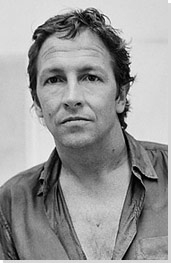Untitled 2013
Roger Hiorns' Untitled sculptures that have made an international presence at(Augustine) New York, (IKON) Birmingham and (Lighthouse) Spain. The plastic and metal parts that appear to have originated from motorbikes and cars, such as the bowels, exhaust and water tanks are hung from the ceiling using transparent wire. The vessels produce a foam that slowly travels downwards towards the ground until it breaks apart. The foam seems to occasionally stain the floor, leaving behind a small mark of its existence. This continuous production of foam and influence the gravity has on it enables the concluding form to be produced with little influence from Hirons.
When I visited the IKON to view this piece on display, I found this method of producing the final composition interesting and enabled myself to become more connected with the piece. I liked the idea that I was one of few individuals viewing the piece at the stage it was, and that the piece looked completely different the day and hour before I visited the piece. This made me view the piece in a completely new perceptive, I viewed the piece as if it was a creature growing, not a collection of inanimate object.
This installation is no exception to the exploration of two components being combined, I find this is evident by the use of formless, growing foam and inanimate transport parts. From my visit, I found the discarded transport parts, to possess a humanness likeness, this might be because of the composition, by this I mean that the objects have been assembled in a manner that has a human figure similarity.
Information gathered from IKON exhibition guide.
Seizure
Information gathered from IKON exhibition guide.
Seizure
In this installation 'seizure' created in 2008, he crystallised an apartment in London that was scheduled to be demolished, with copper sulphate crystals that were formed through a chemical process of copper sulphate solution. This installation in 2013 was moved to Yorkshire sculpture park. The floors seem to be covered with crystals which emphasise the idea that the artist intended for the visitors to interact with the piece, similar to others, such as the previous untitled 2013. The reason behind this is because the visitors involuntarily have to break the crystals on the floor to view the exhibition, further supporting the idea that the eventual appearance isn't influenced by the artist, instead it is heavily influenced by the people viewing it. I believe 'Seizure' was the start of this journey for the artist, in exploring new materials.






























